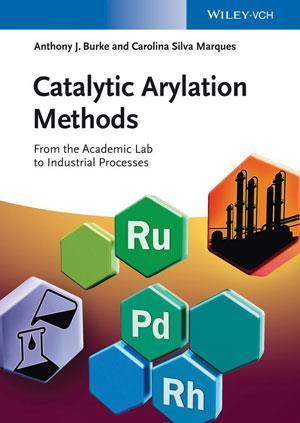Anthony Burke and Carolina Silva Marques
Wiley VCH
2014 | 528pp | £130
ISBN 9783527335183

Some chemists may have their favourite one-size-fits-all conditions to bolt a phenyl ring to another aromatic ring – but what if you wanted to arylate a sulfur atom instead of a carbon? Or, crazy as it may sound, build up the aryl group from scratch? I suggest turning to Catalytic arylation methods as your first port of call.
The authors deliberately restrict themselves to developments within the last 10 years (the book is big enough as it is), so the treatment of those seminal 2010 Nobel prize winning reactions is brief in relation to the rest of the book. What is said about these reactions in the first chapter is sufficient, and a good place to find up-to-date conditions to try as a promising starting point.
The chapter divisions are particularly apt and reflect the current state of the art in catalytic arylation methods. The distinction between your bog standard coupling of organometallics and aryl halides and some of the latest C–H activation methodologies (that will hopefully become as useful as those 2010 Nobel corkers), is nicely bridged by the often overlooked decarboxylative coupling processes and an extensive section on heteroatom arylation. Topics such as cycloaddition aromatisation and a-arylation are ones that really didn’t spring to mind before reading this book, and, if nothing else, will give great inspiration for the way we make molecules.
Nice touches include extensive bibliographies and selected experimental procedures at the end of each chapter. The informal commentary style adds some context to the described work. A helpful addition for industrial chemists is the information on process scales, and the emphasis on the value of cheaper metal catalysts is a welcome inclusion.
Those working in either industry or academia will find this book a valuable resource to turn to. Advanced undergraduates may also find it useful, but would need more introductory text to secure the fundamentals. There are some typographical errors in the text (which are jarring at times), mistakes in a few structures and the odd, apparently pointless, repetition of illustrative compounds (I saw losartan reproduced three times), but overall I still warmly recommend it.
Purchase Catalytic arylation methods: from the academic lab to industrial processes from Amazon.co.uk












No comments yet